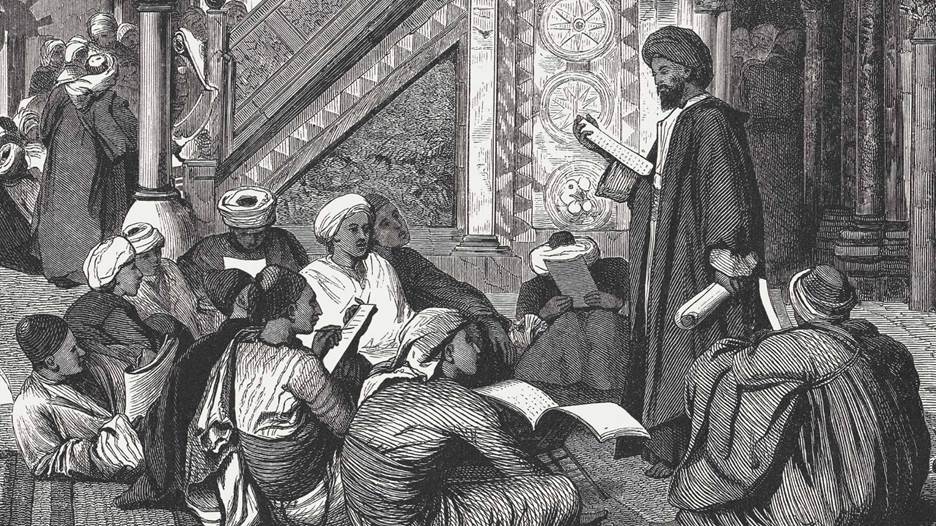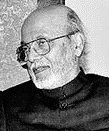
For more than five hundred years (700-1258), Muslim scientists were the torch bearers of knowledge, advancing human civilization with their discoveries and inventions. It was this light that awakened Europe from its slumber in the dark ages (600-1100)
Why Did the Scientific Revolution Not Take Place in the Islamic World? - 3
By Professor Nazeer Ahmed
Concord, CA

The aftermath of the Mu’tazalite convulsions influenced the development of natural sciences in the Islamic world in a profound way. The Islamic world moved away from the speculative philosophies of the Greeks to the empirical sciences more in tune with the injunctions of the Qur’an. An explanation is in order here.
Although generalizations are facile, it can nonetheless be asserted that the primary thrust of Greek philosophy is deductive. It is “top down”. It starts with axioms and proceeds downwards towards deductions and conclusions. The assumptions inherent in the axioms become the limits for the deductions and conclusions. In this process, errors of judgment are made, as did the Mu’tazalites in their speculations about the origins of the Qur’an. By contrast, the empirical sciences are inductive. They are “bottoms up” and are based on observation, measurement, codification and extension.
The Qur’an draws attention, time and again, to the many signs in nature and invites humankind to interact with and learn from these signs. In the empirical approach, reason becomes a servant of knowledge, not its autocratic ruler. The limits of reason are recognized and built into the edifice of knowledge as it is constructed from observations and measurements. Thus, a scientist has his feet on the ground while reaching out to the heavens with reason. A philosopher, on the other hand, has his head in the sky but his feet may or may not touch the ground and he may be left dangling between the heavens and the earth.
The classical Islamic civilization that emerged in the post-Mu’tazalite period was scientific-empirical. Indeed, the Muslims were arguably the originators of the empirical method. They took the pursuit of natural sciences away from the speculative philosophies of the Greeks to the experimental, practical sciences based on observation. The Muslims had learned the art of paper making from the Chinese after the Battle of Tlas (751). Paper mills sprang up in the major cities, facilitating the transcription and publication of books. Princes, noblemen and the rich vied with each other to establish libraries. The brilliance of this civilization can be gauged from the breadth and depth of its lasting contributions. For more than five hundred years (700-1258), Muslim scientists were the torch bearers of knowledge, advancing human civilization with their discoveries and inventions. It was this light that awakened Europe from its slumber in the dark ages (600-1100). The contributions of some of the eminent scientists of the Islamic Golden Age are summarily highlighted here.
Jabir Ibn-Haiyan (d 815) is known as the father of empirical chemistry. He was the first to use the process of distillation and to attempt a mathematical classification of pure elements based on their known characteristics. His work contains a detailed description of fractional distillation, solubility and volatility of compounds as well as alloying, purification and testing of metals
Al Khwarizmi (d 850), was a celebrated mathematician, astronomer and geographer. He was the inventor of algebra. His method of solving quadratic equations presaged the development of algorithms, widely used in modern software development. He was the first one to use the decimal system and to introduce the Hindu-Arabic numerals into mathematics.
Al Kindi (d 870) was a philosopher who wrote extensively on Aristotle and made noteworthy contributions not only to philosophy but also to mathematics, psychology, ethics and cosmology.
Al Razi (d 925) was an outstanding physician and chemist. He is known as the father of clinical medicine. He is best remembered for his pioneering work on smallpox, measles and other contagious diseases. His voluminous works on surgery and therapy influenced the development of medicine in Latin Europe and were required reading in European universities until the eighteenth century.
Al Battani (d 928) was a noted mathematician and empirical astronomer who influenced the works of Copernicus, Kepler and Galileo. He introduced trigonometric functions into geometry, calculated the precession of the equinoxes and the obliquity of the ecliptic. His measurements on the positions of the sun and moon were more accurate than those made by Copernicus some six centuries later.
Al-Farabi (d 950) applied Aristotelian philosophy to political science, ethics and logic. He sought to bring science, politics and ethics out of the fuzziness of symbolism into the concrete world of logic and reason. He was thus the first political scientist. The comprehensiveness of his encyclopedic works earned him the title of “the second teacher” after Aristotle and he influenced the later works of the giants among philosophers such as Ibn Sina and Maimonedes.
Al Masudi (d 956) was the first to integrate history with empirical geography. His travels took him far and wide to Egypt, Arabia, East Africa, India, Sri Lanka, Armenia, Azerbaijan and the Caspian Sea. He documented his observations of the lands he visited in his masterpiece, Muruj adh-dhahab wa ma’adin al-jawahar (The Meadows of Gold and Mines of Gems).
Al Buzjani (d 997) was a distinguished applied mathematician. He was the first to introduce the use of secants and cosecants in geometry. He constructed a comprehensive table of sines and tangents, made a detailed study of the inter-relationship between trigonometric functions and used this knowledge to solve difficult geometrical problems using conics. Modern trigonometry rests on a foundation built by Al Buzjani.
Ibn Sina (1037) was the most celebrated physician of the Islamic Golden Age. His masterpiece work, the Canons of Medicine, was the standard textbook in Europe until the seventeenth century. One of the most significant thinkers of the era, his influence extended to philosophy, psychology, chemistry, logic, earth sciences, astronomy and the philosophy of science.
Ibn al Haitham (d 1040) is celebrated as the father of modern optics. He was the first to recognize that light is perceived by reflection rather than emanating from the eyes, as the Greeks had assumed. He correctly formulated the laws of reflection, studied refraction, the formation of rainbows, lunar and solar eclipses and invented the camera obscura. His work influenced Roger Bacon (1292) of England and the celebrated German astronomer Johannes Kepler (d 1630).
Al Baruni (d 1052) was a celebrated historian whose encyclopedic work on the sciences, civilization and culture of India set a benchmark for empirical anthropological documentation. He was also a mathematician of the first rank as well as a noted astronomer, natural philosopher, geographer and geologist.
Omar Khayyam (d 1131), poet, mathematician and astronomer, left his mark on the sciences with his contributions to the Jalali calendar introduced by the Seljuq Sultan Malik Shah. This calendar was more precise than the Julian calendar used in the modern world. Omar Khayyam developed a method of extracting roots of whole numbers and influenced the development of irrational numbers by European mathematicians. Through the translations of his Rubayiat, he is celebrated as a poet the world over.
Al Idrisi (d 1165) was a geographer and historian who served at the court of Roger II of Sicily. He compiled a map of the known world using earlier sources as well as his own observations through his travels in the Magreb (North-west Africa) and West Asia. The map was extraordinary for its times and showed Western Europe, the Mediterranean world and West Asia in great detail. In his book, Kitāb nuzhat al-mushtāq fī ikhtirāq al-āfāq (“The Pleasure Excursion of One Who Is Eager to Traverse the Regions of the World”), al Idrisi describes contacts between the Arabs and certain islands near the West Indies of America. Historians have used al Idrisi’s observations to assert the African and Muslim discovery of America before Columbus.
Ibn Rushd (d 1198) is generally considered the greatest rational philosopher after Aristotle. His three volume commentary on the works of the Greek Master profoundly influenced the development of rational thought in the Latin West. Ibn Rushd also wrote extensively on jurisprudence, psychology, astronomy, physics and music theory.
Al Jazari (d 1206) was the most prolific inventor of his age. He was an outstanding engineer and a mechanical genius. More than 100 inventions are ascribed to him, including the cam shaft, rotary to linear motion converters, segmented gears, chain pumps, water pumps, clocks and mechanical robots. He was arguably the father of robotics.
(The author is Director, World Organization for Resource Development and Education, Washington, DC; Director, American Institute of Islamic History and Culture, CA; Member, State Knowledge Commission, Bangalore; and Chairman, Delixus Group)

